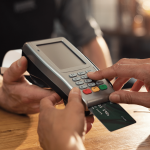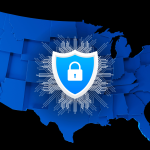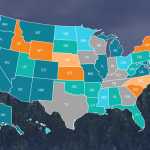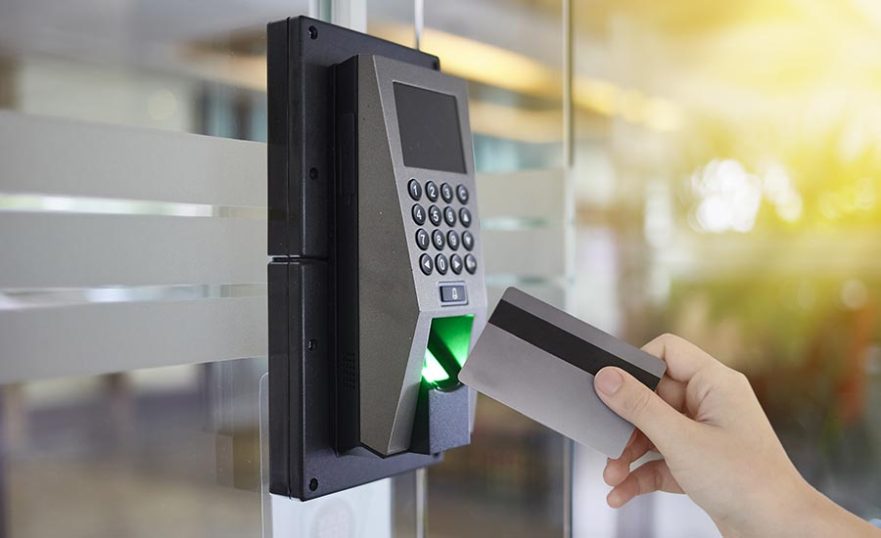The use of access control in cannabis business security is nothing new. Let’s take a door, lock, and key for example. In this scenario, the door is the access control point, the lock is the physical form of access control being used, and the key is the credential which allows access to the access control point.
But access control has come a long way since the invention of locks and keys. There are now a variety of solutions on the market to ensure access control points are secure. Familiarizing yourself with the types of access control points and methods of securing them will allow cannabis businesses to maintain a high degree of security compliance.
Types of Access Control
An access control point can be an entry/exit into a facility itself or into a controlled access area of the facility. For cannabis businesses, this could mean exterior fences, gates, and doors, as well as interior doors leading to the lobby, secure storage areas, retail areas, cultivation areas, offices, etc. Each of these access control points acts as an opportunity to either prevent or allow access into another area of the facility.
In order to secure access control points, cannabis businesses rely on access control systems, a high-tech form of access control. These electronic systems are programmed to either provide access to authorized individuals or restrict access to unauthorized individuals. Think of access control systems as a more sophisticated lock and key system – one that can distinguish who to let in and who to keep out based on pre-programmed settings.
Traditional access control systems consist of a variety of components, including readers and credentials. Readers are located outside of access control points and require a credential be presented to allow entry or exit. There are numerous combinations of readers and credentials that can be used at each access point. Examples include keycard readers and keycards, PIN code readers and PIN codes, and even biometric readers that turn a user’s face, fingerprint, or palm into the credential. Other new contactless methods of access control credentials include the use of Bluetooth or Near-Field Communication with apps installed on smart phones or devices.
Importance of Access Control Points
The access control points identified in cannabis businesses each do their job to separate and control access to different areas of a facility. While some individuals may have access to all areas at all times, others may only be allowed to enter certain areas. Additionally, access to controlled areas can be scheduled and ensuring employees have time-based access can prevent employee theft. For example, an employee may be allowed access to secure storage areas during their scheduled daytime shift but not overnight, reducing the opportunities for theft. Access control systems allow cannabis businesses to determine the level and hours of access for each access control point and make changes to the system in response to security threats when necessary.
Above all, every access control point within a cannabis business must be secured to prevent theft. This includes access control points located on the interior and exterior, with special attention paid to locations where cannabis, currency, records, and security equipment are stored. Without the proper credentials or level of access, potential criminals are thwarted at the door.
Compliance
Access control regulations vary by state and license type, however, the securing of access control points is typically required for all cannabis license types. Access control systems also assist cannabis businesses in meeting other regulatory compliances. Many laws require keeping a daily log of those who accessed secure areas. Others may require video surveillance footage of when an access control point was accessed. A well-integrated access control system can automate these processes and lessen headaches for cannabis businesses when it comes to auditing. Remember, abiding by all local cannabis laws and regulations is just the minimum. Anything done to exceed legal compliance will allow for more thorough and proactive security program and aid in establishing a successful business.
How Can Sapphire Risk Help?
Tony Gallo and the team of application writers and consultants at Sapphire Risk Advisory Group have written hundreds of access control system plans and standard operating procedures for cannabis business applications. Follow us on social media to stay up to date with more security best practices and cannabis industry updates!
- California Senate Bill 69 Adds CEQA Requirements for New Cultivators

- Top 5 Cannabis Security and Surveillance Violations

- Peace of Mind in the Retail Sector: Facility Security

- Opportunities in the Ohio (O-High-O) Cannabis Market

- Building Security and Trust: Verifying Identification and Payments

- The Importance of Loss Prevention

- Thoughts to Improve Cannabis Security Regulations Across the Nation

- Opportunities in the Minnesota Cannabis Market

- U.S. Cannabis Legalization 2023 Update

- How to Present Your Cannabis Business Vision to Your City


